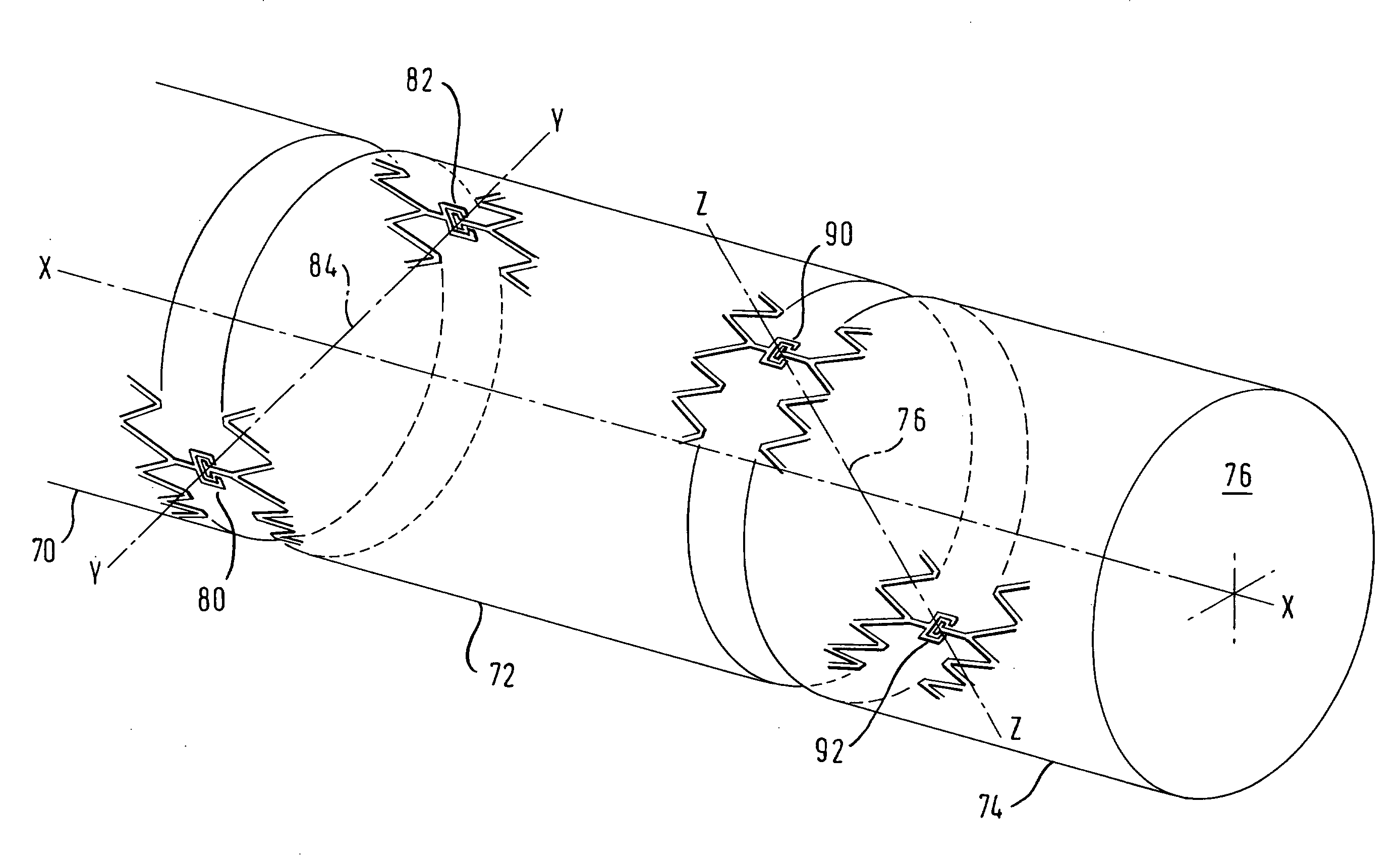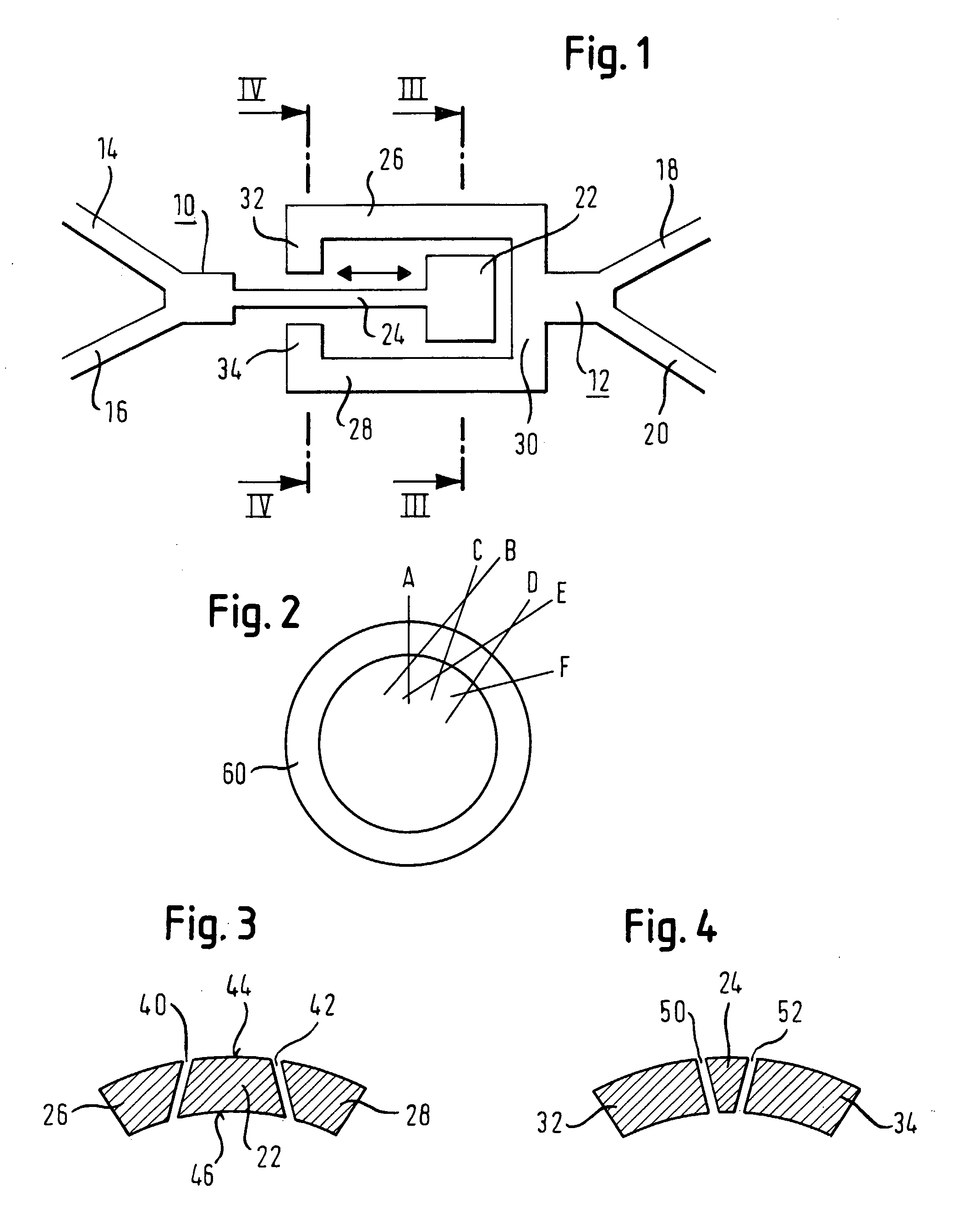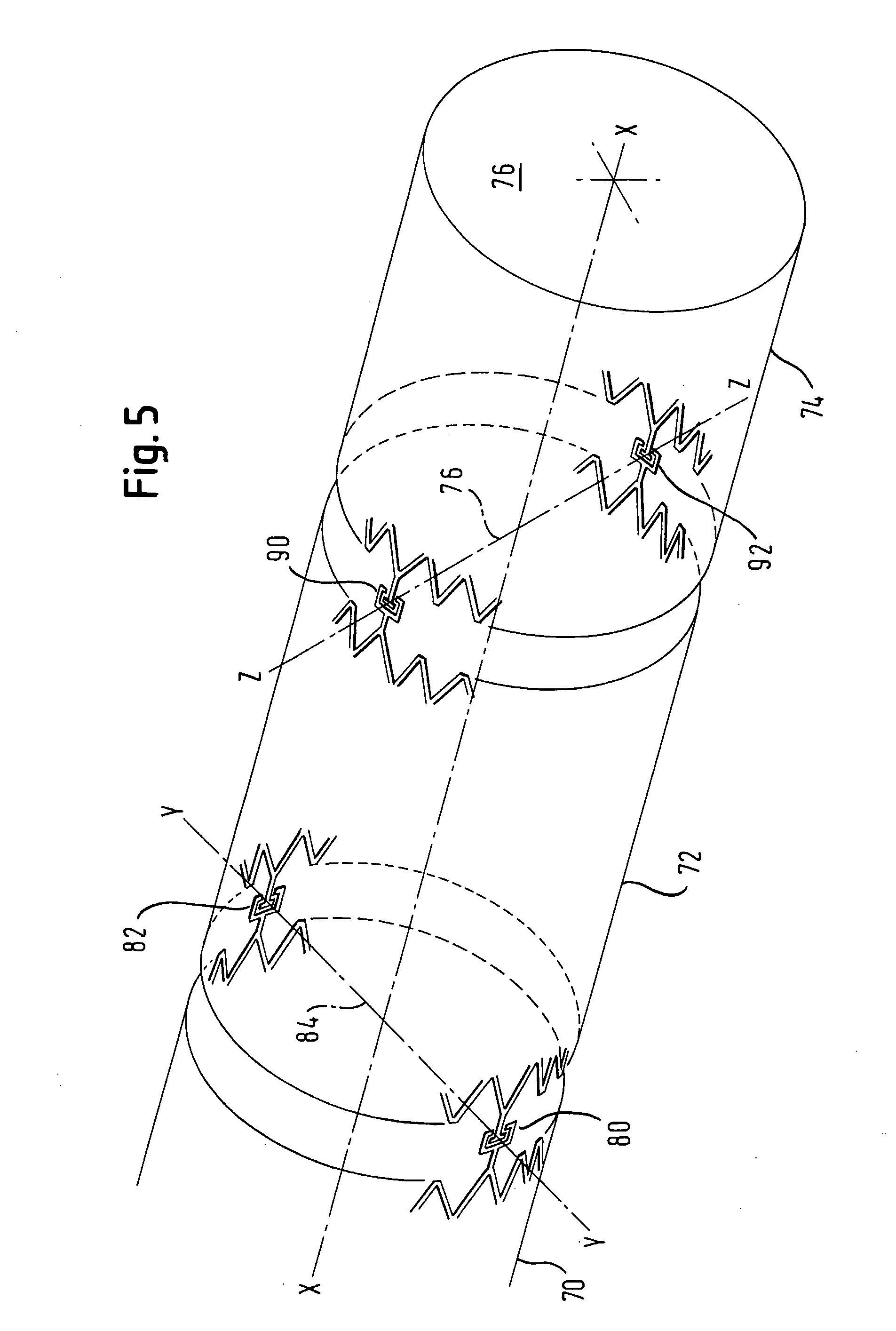Flexible Intravascular Implant
a flexible, intravascular technology, applied in the field of medical implants, can solve the problems of increasing the risk of damage to the walls of the lumen, affecting the delivery system of catheters, and strain not always a good thing, so as to increase the risk of damage to the walls
- Summary
- Abstract
- Description
- Claims
- Application Information
AI Technical Summary
Benefits of technology
Problems solved by technology
Method used
Image
Examples
Embodiment Construction
[0032]FIG. 1 is a view from above of a sliding joint in a flexible stent in accordance with one exemplary embodiment of the present invention. The joint is in a bridge between a first node 10 and a second node 12 of the stent matrix, the node 10 being between stent matrix struts 14 and 16 and the node 12 between struts 18 and 20. The bridge between the nodes 10 and 12 looks like a piston cylinder arrangement, with a piston head 22 on a piston rod 24 which forms a rigid connection between the node 10 and the piston head 22. The piston head 22 slides a pair of sliding surfaces defined by a “cylinder” rigidly mounted to the node 12. In effect, the cylinder is a pair of rails 26, 28 joined to the node 12 by a back span 30. At the other end of the rails 26, 28 from the back span 30, there are respective opposing clamping portions 32 and 34 which bracket the piston rod 24, such that the piston rod 24 slides on the end surfaces of the clamping portions 32 and 34. Drawing FIGS. 3 and 4 reve...
PUM
 Login to View More
Login to View More Abstract
Description
Claims
Application Information
 Login to View More
Login to View More - R&D
- Intellectual Property
- Life Sciences
- Materials
- Tech Scout
- Unparalleled Data Quality
- Higher Quality Content
- 60% Fewer Hallucinations
Browse by: Latest US Patents, China's latest patents, Technical Efficacy Thesaurus, Application Domain, Technology Topic, Popular Technical Reports.
© 2025 PatSnap. All rights reserved.Legal|Privacy policy|Modern Slavery Act Transparency Statement|Sitemap|About US| Contact US: help@patsnap.com



